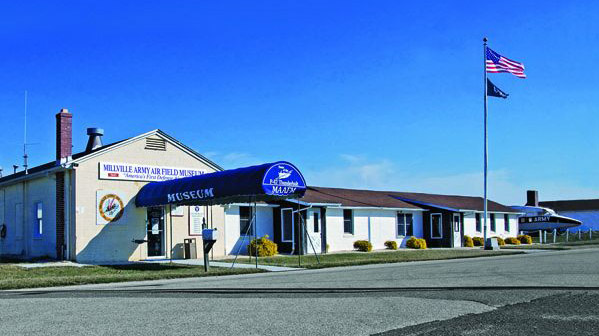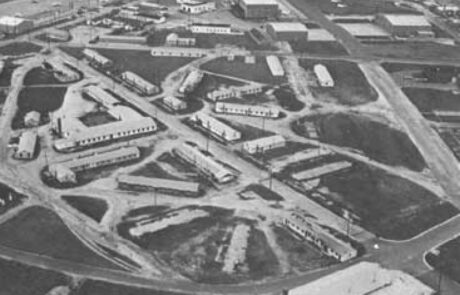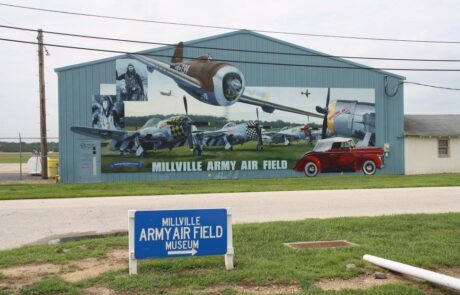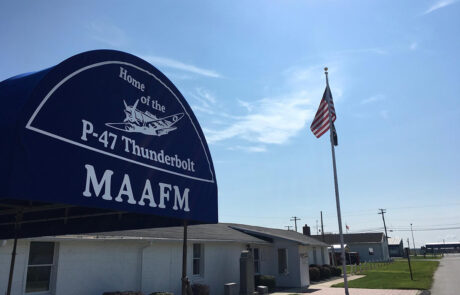Municipality: Millville
Category: Military Installation
In April 1939, as the Nazis expanded their hold on Europe, the U.S. Congress approved a massive increase in the U.S. military. This included the construction of 50,000 new aircraft and the establishment of new air fields for training and defense. Early in 1940, the War Department informed the city officials of Millville, Bridgeton and Vineland that the Army Air Corps, precursor to the Air Force, was interested in having an airport built in Cumberland County. The City of Millville immediately purchased 500 acres of land next to a small, grass-covered airstrip used by the members of the Millville Flying Club, a group of local aviation enthusiasts, and offered it to the Federal Government. By February 1941 construction had begun, marking Millville Army Air Field as America’s first defense airport. By the end of 1942, the Millville airport had four concrete runways, occupied over 14,000 acres of land and housed 125 single-engine fighter planes.
The Millville Army Air Field was intended to be a gunnery school for fighter pilots preparing for combat. Gunnery practice took place on a target range just south of the runways where full-scale replicas of ships, bridges, tanks, trucks and railroads would be strafed and bombed. While during the first few years of operation, the air field was home to the Curtiss P-40 Warhawk, a single-engine, single-seat fighter used throughout the war, the military soon realized that it was being outperformed by Nazi Germany’s fighter aircraft. By 1943 the P-40 had been replaced at the Millville air field by the P-47 Thunderbolt, which was faster, heavier and more lethal than any single-engine fighter aircraft before it. At the height of its operations, the Millville Army Air Field was home to 64 P-47 Thunderbolts, over 1,300 enlisted men and 439 officers. Today, the modern namesake of the P-47 Thunderbolts, the A-10 Thunderbolt II “Warthog” fighter aircraft can often be seen flying over Millville on training sorties from the Dover Air Force Base in Delaware.
by the time the peace treaty with Japan was signed on September 2, 1945, the Millville Army Air Field had ended its gunnery and bombing training and had been designated as a sub-base under the Dover Army Air Field Base. The following month it was placed in inactive status. During its four-year existence, more than 10,000 personnel served in Millville, and 1,500 pilots received advanced fighter training. During the war there were fourteen fatalities among the pilots, all of them training flights, and five fatalities among the ground crews in other types of accidents.
Millville Army Air Field was officially closed in November 1946. Soon after the City of Millville purchased it back including 887 acres with thirty buildings, water and sewer facilities and the airport operations facility. The gunnery range south of the runways was turned over to the State of New Jersey to be used for public hunting and fishing. Millville leased the buildings for industrial and commercial purposes and the air field is now also home to the Millville Army Air Field Museum, a non-profit organization founded in 1988 to preserve the history of the air field. The air field and its remaining buildings were designated a historic district by the State of New Jersey in 2011.




